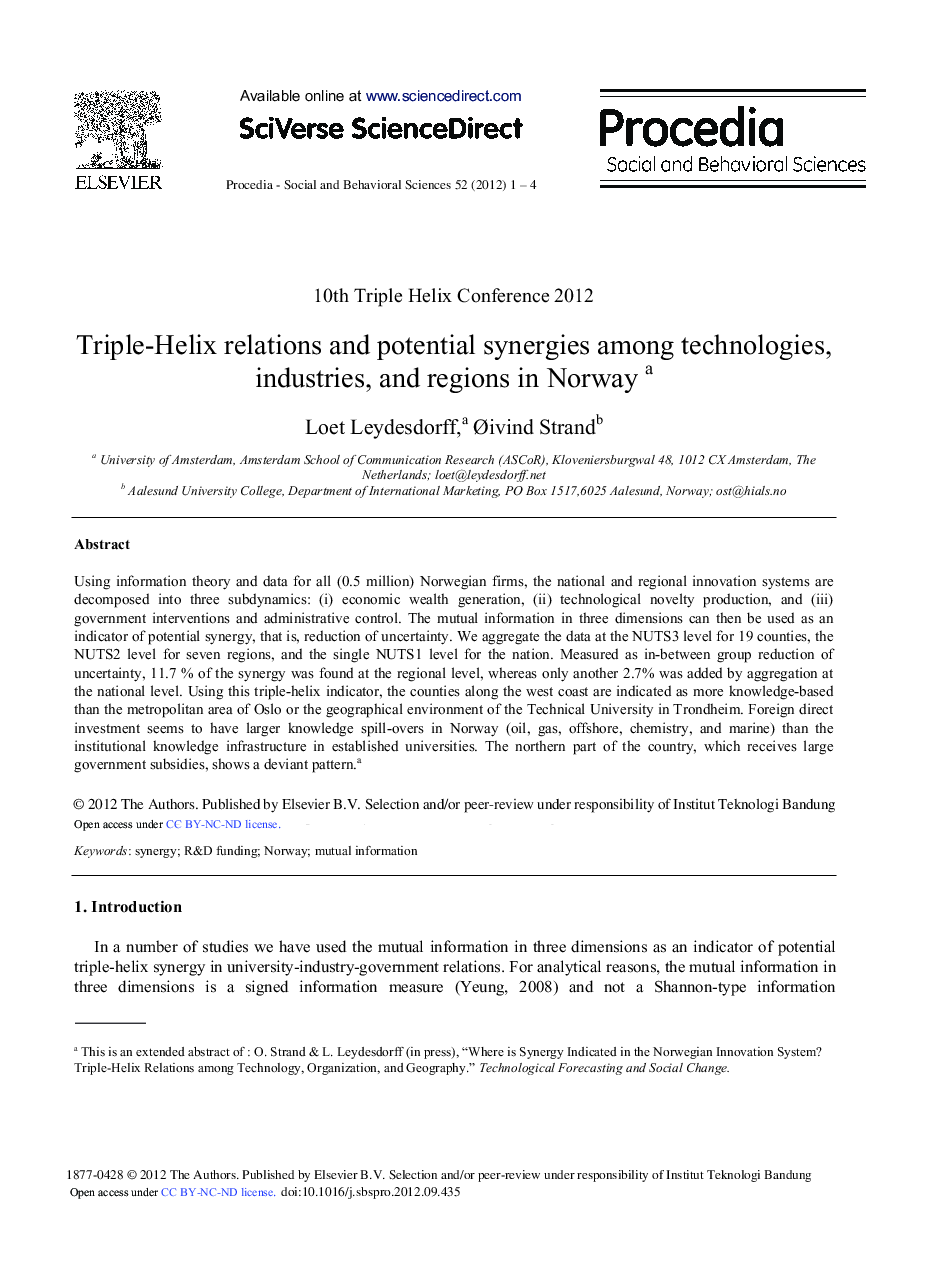| Article ID | Journal | Published Year | Pages | File Type |
|---|---|---|---|---|
| 1120614 | Procedia - Social and Behavioral Sciences | 2012 | 4 Pages |
Using information theory and data for all (0.5 million) Norwegian firms, the national and regional innovation systems are decomposed into three subdynamics: (i) economic wealth generation, (ii) technological novelty production, and (iii) government interventions and administrative control. The mutual information in three dimensions can then be used as an indicator of potential synergy, that is, reduction of uncertainty. We aggregate the data at the NUTS3 level for 19 counties, the NUTS2 level for seven regions, and the single NUTS1 level for the nation. Measured as in-between group reduction of uncertainty, 11.7% of the synergy was found at the regional level, whereas only another 2.7% was added by aggregation at the national level. Using this triple-helix indicator, the counties along the west coast are indicated as more knowledge-based than the metropolitan area of Oslo or the geographical environment of the Technical University in Trondheim. Foreign direct investment seems to have larger knowledge spill-overs in Norway (oil, gas, offshore, chemistry, and marine) than the institutional knowledge infrastructure in established universities. The northern part of the country, which receives large government subsidies, shows a deviant pattern.
